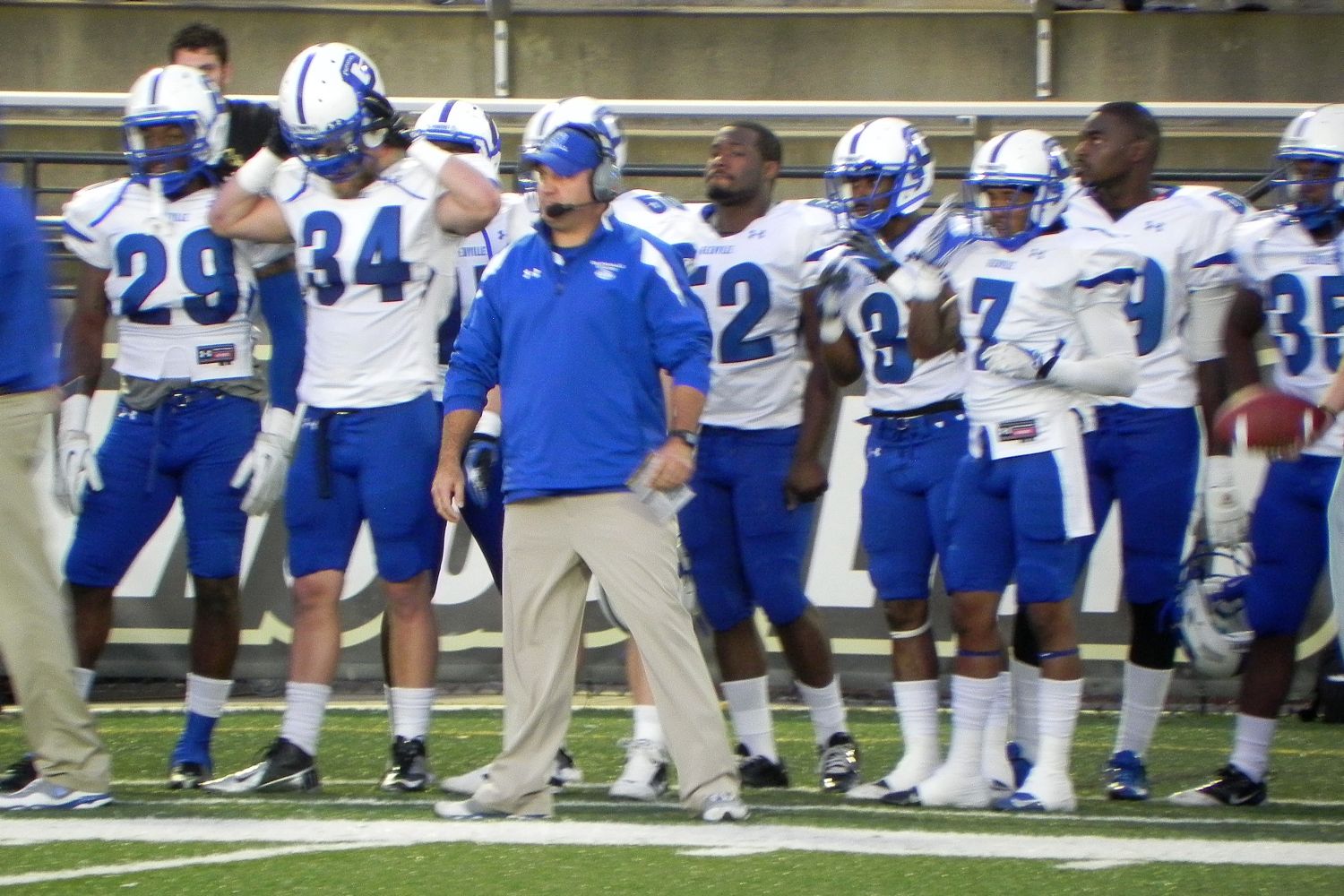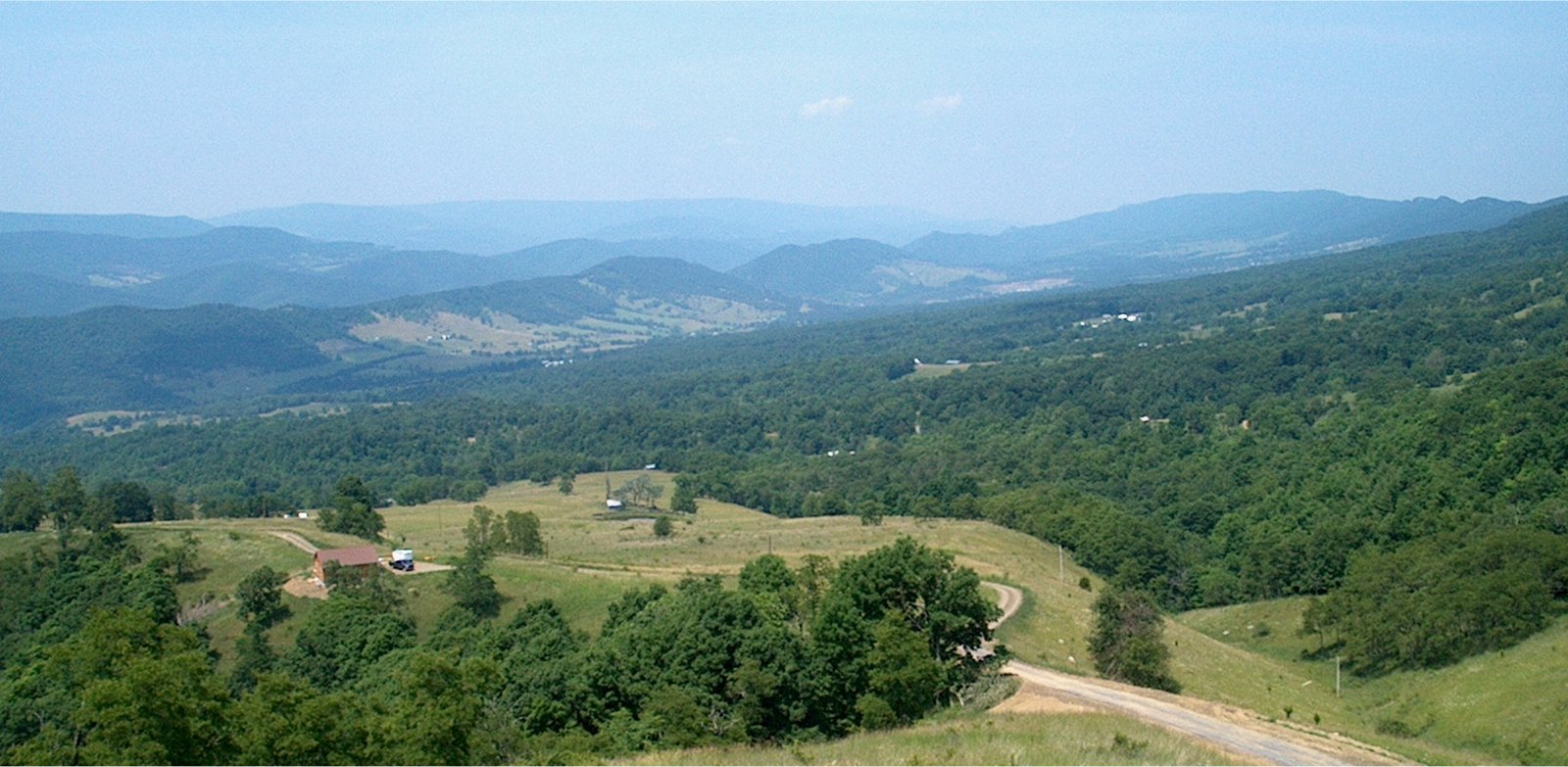|
Glenville, West Virginia
Glenville is a town in and the county seat of Gilmer County, West Virginia, United States, along the Little Kanawha River. The population was 1,128 at the 2020 census. It is the home of Glenville State University. History In the late 1700s and early 1800s, pioneers began settling in the area they called ‘‘the Ford’’ because it was a place where travelers could cross the river. Later, the community was named Glenville because of its location in a glen. The first grist mill in present-day Gilmer County was constructed there in 1812. The first courthouse was completed in 1850, the second in 1872, and the current courthouse in 1923. Glenville was incorporated in 1856. Before the 1930s, the Little Kanawha River’s commercial traffic dominated the town’s economy. Road construction contributed to the demise of riverboating by the late 1930s. The natural gas and oil industry rose to prominence after oil was struck in 1875 at nearby Letter Gap. Glenville is now the headqua ... [...More Info...] [...Related Items...] OR: [Wikipedia] [Google] [Baidu] |
Town
A town is a type of a human settlement, generally larger than a village but smaller than a city. The criteria for distinguishing a town vary globally, often depending on factors such as population size, economic character, administrative status, or historical significance. In some regions, towns are formally defined by legal charters or government designations, while in others, the term is used informally. Towns typically feature centralized services, infrastructure, and governance, such as municipal authorities, and serve as hubs for commerce, education, and cultural activities within their regions. The concept of a town varies culturally and legally. For example, in the United Kingdom, a town may historically derive its status from a market town designation or City status in the United Kingdom, royal charter, while in the United States, the term is often loosely applied to incorporated municipality, municipalities. In some countries, such as Australia and Canada, distinction ... [...More Info...] [...Related Items...] OR: [Wikipedia] [Google] [Baidu] |
Glenville State University
Glenville State University (GSU) is a public college in Glenville, West Virginia, United States. History Glenville State University was founded in 1872 as a branch of West Virginia Normal School. It became known as "Glenville State Normal School". It served the higher education needs of Central West Virginia. By 1910, the college enrollment had exceeded the population of Glenville and grew into a full four-year college by 1931. The Glenville State College Alumni Center, known as the John E. Arbuckle House, was listed on the National Register of Historic Places in 1991. On February 22, 2022, Glenville State College attained university status. Academics The college awards bachelor's degrees, associate degrees, master's degrees, and certificates. Athletics In athletics, the school's sports teams are known as Pioneers and Lady Pioneers, and they compete in the Mountain East Conference. They have teams in football, basketball, track and field, softball, golf, baseball, cross ... [...More Info...] [...Related Items...] OR: [Wikipedia] [Google] [Baidu] |
White (U
White is the lightest color and is achromatic (having no chroma). It is the color of objects such as snow, chalk, and milk, and is the opposite of black. White objects fully (or almost fully) reflect and scatter all the visible wavelengths of light. White on television and computer screens is created by a mixture of red, blue, and green light. The color white can be given with white pigments, especially titanium dioxide. In ancient Egypt and ancient Rome, priestesses wore white as a symbol of purity, and Romans wore white togas as symbols of citizenship. In the Middle Ages and Renaissance a white unicorn symbolized chastity, and a white lamb sacrifice and purity. It was the royal color of the kings of France as well as the flag of monarchist France from 1815 to 1830, and of the monarchist movement that opposed the Bolsheviks during the Russian Civil War (1917–1922). Greek temples and Roman temples were faced with white marble, and beginning in the 18th c ... [...More Info...] [...Related Items...] OR: [Wikipedia] [Google] [Baidu] |
Population Density
Population density (in agriculture: Standing stock (other), standing stock or plant density) is a measurement of population per unit land area. It is mostly applied to humans, but sometimes to other living organisms too. It is a key geographical term.Matt RosenberPopulation Density Geography.about.com. March 2, 2011. Retrieved on December 10, 2011. Biological population densities Population density is population divided by total land area, sometimes including seas and oceans, as appropriate. Low densities may cause an extinction vortex and further reduce fertility. This is called the Allee effect after the scientist who identified it. Examples of the causes of reduced fertility in low population densities are: * Increased problems with locating sexual mates * Increased inbreeding Human densities Population density is the number of people per unit of area, usually transcribed as "per square kilometre" or square mile, and which may include or exclude, for example, ar ... [...More Info...] [...Related Items...] OR: [Wikipedia] [Google] [Baidu] |
Census
A census (from Latin ''censere'', 'to assess') is the procedure of systematically acquiring, recording, and calculating population information about the members of a given Statistical population, population, usually displayed in the form of statistics. This term is used mostly in connection with Population and housing censuses by country, national population and housing censuses; other common censuses include Census of agriculture, censuses of agriculture, traditional culture, business, supplies, and traffic censuses. The United Nations (UN) defines the essential features of population and housing censuses as "individual enumeration, universality within a defined territory, simultaneity and defined periodicity", and recommends that population censuses be taken at least every ten years. UN recommendations also cover census topics to be collected, official definitions, classifications, and other useful information to coordinate international practices. The United Nations, UN's Food ... [...More Info...] [...Related Items...] OR: [Wikipedia] [Google] [Baidu] |
January 2016 United States Blizzard
The January 2016 United States blizzard was a deadly, historic and crippling blizzard that produced up to of snow in parts of the Mid-Atlantic (United States), Mid-Atlantic and Northeastern United States during January 22–24, 2016. A weather system, evolving from a shortwave trough that formed in the Pacific Northwest on January 19, consolidated into a defined Low-pressure area (meteorology), low-pressure area on January 21 over Texas. Meteorologists indicated that a resultant storm could produce more than of snow across a wide swath of the Mid-Atlantic region and could "paralyze the eastern third of the nation", and regarded it as a "potentially historic blizzard". Winter weather expert Paul Kocin described the blizzard as "kind of a top-10 snowstorm". On January 20–22, the governors of eleven states and the mayor of Washington, D.C., declared a state of emergency in anticipation of significant snowfall and blizzard conditions. Approximately 103 million p ... [...More Info...] [...Related Items...] OR: [Wikipedia] [Google] [Baidu] |
National Weather Service
The National Weather Service (NWS) is an Government agency, agency of the Federal government of the United States, United States federal government that is tasked with providing weather forecasts, warnings of hazardous weather, and other weather-related products to organizations and the public for the purposes of protection, safety, and general information. It is a part of the National Oceanic and Atmospheric Administration (NOAA) branch of the United States Department of Commerce, Department of Commerce, and is headquartered in Silver Spring, Maryland, within the Washington metropolitan area. The agency was known as the United States Weather Bureau from 1891 until it adopted its current name in 1970. The NWS performs its primary task through a collection of national and regional centers, and 122 local List of National Weather Service Weather Forecast Offices, Weather Forecast Offices (WFOs). As the NWS is an agency of the U.S. federal government, most of its products are in the ... [...More Info...] [...Related Items...] OR: [Wikipedia] [Google] [Baidu] |
Grant County, West Virginia
Grant County is a county in the U.S. state of West Virginia. As of the 2020 census, the population was 10,976. Its county seat is Petersburg. The county was created from Hardy County in 1866 and named for Civil War General and the 18th president of the United States Ulysses S. Grant. History The territory that became Grant County in 1866 was originally part of Hampshire County, the oldest county formed within the present boundaries of West Virginia, in 1754. In 1786, Hardy County was formed from the southern portion of Hampshire County. The county's boundaries were relatively stable from 1788 until 1866, when Grant County was formed from the western portion of Hardy. The first counties formed in the state following the admission of West Virginia to the Union were Grant and Mineral in 1866, the latter formed from the western portion of Hampshire County, and thus adjoining Grant. They were the fifty-first and fifty-second counties in West Virginia, and only Lincoln, Summers ... [...More Info...] [...Related Items...] OR: [Wikipedia] [Google] [Baidu] |
Pendleton County, West Virginia
Pendleton County is a county located in the U.S. state of West Virginia. As of the 2020 census, the population was 6,143, making it the second-least populous county in West Virginia. Its county seat is Franklin. The county was created by the Virginia General Assembly in 1788 from parts of Augusta, Hardy, and Rockingham counties and was named for Edmund Pendleton (1721–1803), a distinguished Virginia statesman and jurist. Spruce Knob, located in Pendleton County, is the highest point in the state and in the Alleghenies, its elevation being 4,863 feet. Parts of the Monongahela and George Washington National Forests are also located in Pendleton County. History By the 1740s, the three main valleys of what became Pendleton County had been visited and named by white hunters and prospectors. One of the hunters, a single man named Abraham Burner, built himself a log cabin about a half mile downstream of the future site of Brandywine in 1745. He was the county's first whit ... [...More Info...] [...Related Items...] OR: [Wikipedia] [Google] [Baidu] |
The West Virginia Hills
"The West Virginia Hills" is one of West Virginia's four state songs. History "The West Virginia Hills" was written in 1879 as a poem inspired by the scenery surrounding the Glenville area and put to music in 1885 by Henry Everett Engle. The song was made one of West Virginia's state songs on February 3, 1961. While the original poem is traditionally credited to Ellen Ruddell King, it is believed by some that the lyrics were in fact written by her husband, the Reverend David King. Lyrics I. Chorus II. III. IV. References External links First Verse and Chorus by R.J. Nestor {{DEFAULTSORT:West Virginia Hills Songs about West Virginia West Virginia West Virginia is a mountainous U.S. state, state in the Southern United States, Southern and Mid-Atlantic (United States), Mid-Atlantic regions of the United States.The United States Census Bureau, Census Bureau and the Association of American ... Symbols of West Virginia 1879 songs ... [...More Info...] [...Related Items...] OR: [Wikipedia] [Google] [Baidu] |
Gilmer County Poor Farm Infirmary
Gilmer County Poor Farm Infirmary is a historic poor farm infirmary building located near Glenville, Gilmer County, West Virginia. It was built in 1907 by what is now the Glenville Golf Club, and is a two-story, three-bay, center entrance frame building with a cross-hip pitched roof and Colonial Revival-style details. The infirmary was in operation until 1941, after which it was used as a day care center and as meeting space for local social and civic organizations. It was listed on the National Register of Historic Places The National Register of Historic Places (NRHP) is the Federal government of the United States, United States federal government's official United States National Register of Historic Places listings, list of sites, buildings, structures, Hist ... in 1998. References Hospital buildings on the National Register of Historic Places in West Virginia Colonial Revival architecture in West Virginia Government buildings completed in 1907 National Regis ... [...More Info...] [...Related Items...] OR: [Wikipedia] [Google] [Baidu] |






